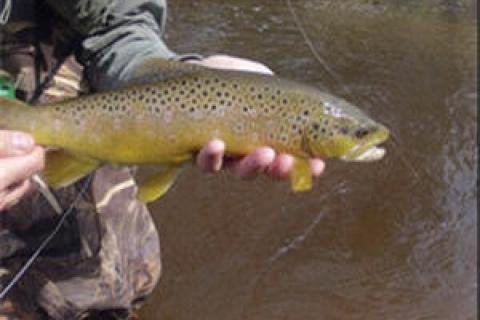
 In early spring you need to slow down and become intimate with the lake or river before you get close to likely trout hideouts. Trout like to hide under logs, behind rocks, near overhanging branches, and along banks. At times, especially during peak feeding activity, they will drop downstream to the tail of the pool or surface out away from the bank.
In early spring you need to slow down and become intimate with the lake or river before you get close to likely trout hideouts. Trout like to hide under logs, behind rocks, near overhanging branches, and along banks. At times, especially during peak feeding activity, they will drop downstream to the tail of the pool or surface out away from the bank.
If you can spot fish that are a good distance from cover, you can bet they will be eager to strike. However, a slow-motion stalk is required. Stay low and use the surrounding cover to sneak up on the fish. Lake fishermen should idle or drift into the area they saw fish,keeping a casting-distance away.
Another advantage of stalking trout is you get to see how fish react to your lure or presentation. Trout that are visible can teach valuable lessons that you learn only when you stalk your prey, just like you were hunting.
Larry Whiteley is host of the award winning
"Outdoor World Radio"
- 2950 views

